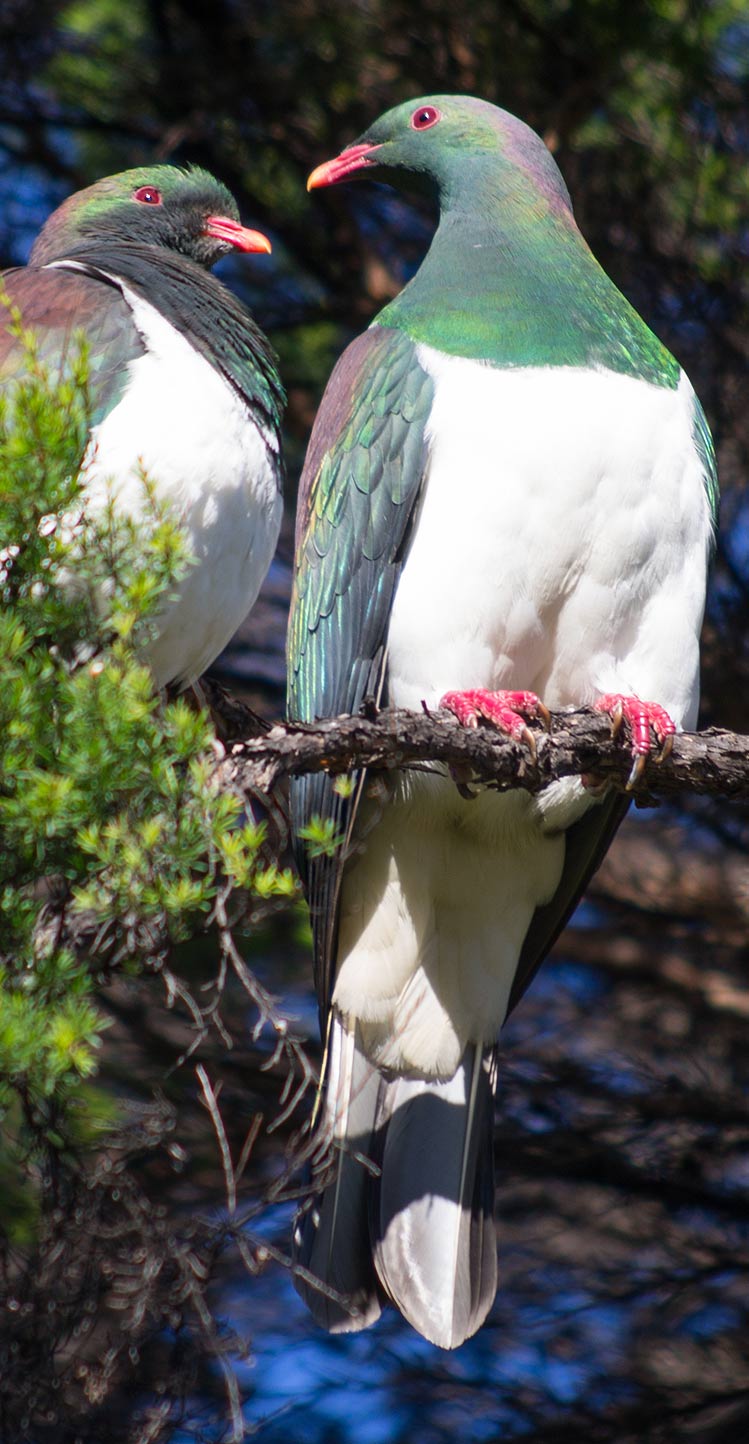Abel Tasman Birdsong Trust
Te Poari Koro Tui
Q: ISN’T THE ABEL TASMAN BIRDSONG TRUST DOING WHAT THE DEPARTMENT OF CONSERVATION SHOULD BE DOING?
A: DOC receives funding for biodiversity in New Zealand, but its goals can differ from those that local people would choose for local areas. For the Department, key habitats such as island sanctuaries, and endangered species like kiwi, kakapo, whio and Maui’s dolphin, are top priorities.
Compared to other conservation areas, the Abel Tasman National Park (ATNP) – where habitats are already modified, and species are threatened locally but are not at risk of extinction – ranks quite low, and misses out on national funding. DOC lacks the resources needed here for vital projects, such as stoat control and reintroducing bird species. Even funds collected locally, such as concession and camping fees, belong to the national pool.
But with the Abel Tasman Birdsong Trust, we can raise funds locally and use them in local projects. The ATNP is a scenic gem, a playground for locals and visitors, but its wildlife is suffering. The birdsong that some of us remember is muted, and invasive weeds are spreading. The ATNP needs help to restore its health.
The Trust’s funding is limited but we have the opportunity to use local enthusiasm, resources and expertise to address local priorities. Projects will be carefully screened, controlled and reviewed, and will be selected only if they show real conservation benefits and no other source of funding is available.
By working together – with tourism operators, DOC and the community in partnership – we can make some very big changes. We can bring back the birdsong that some of us remember, to awaken and delight future generations.
Q: WHAT ARE COMMERCIAL TOURISM OPERATORS DOING TO HELP?
A: Through their support of the Abel Tasman Birdsong Trust, the main tourism operators (see the list on our ’Supporters’ page) have made a big commitment to the Abel Tasman National Park. They have undertaken to collect a ’Birdsong Levy’ for each visitor they bring to the Park, to be used to protect and restore its birdlife and biodiversity.
This is unique in New Zealand and the first time that all the main operators have agreed to work together and contribute in this way. Other tourism businesses are also contributing, by way of donations and involvement as ’Associate Members’. The Abel Tasman National Park is an ecological and recreational treasure, and a vital part of the local economy. With this kind of support, the future of this great little Park can be even brighter.
Q: WHY IS ABEL TASMAN NATIONAL PARK SO MUCH AT RISK?
A: New Zealand’s wildlife evolved in isolation from the rest of the world, and in the absence of mammal predators over millions of years. Only quite recently have they had to contend with a range of voracious killers and competitors such as stoats, possums, pigs, goats, rats, mice, cats, and wasps.
Many of our native species are almost defenceless against attack – some of our birds are flightless and nest on the ground. More than 50 species have become extinct in New Zealand over the past few hundred years, and others have been greatly reduced in numbers or have disappeared from their original habitats. For many people, the birdsong once heard is a fading memory. Unless these invaders can be controlled or eliminated, losses will continue.
Abel Tasman National Park is New Zealand’s smallest, but has a wide range of unique habitats. Areas of vegetation have been modified over the years by Maori and European settlement, together with fire, farming, logging and other pressures. This makes it susceptible to invasive weeds, such as gorse, broom, hakea, cotoneaster, heath, wattle, pampas and pines, leading to a loss of biodiversity and suitable habitat for native wildlife. More recently these habitats have had to contend with other pressures, such as recreational use.
Left unchecked, the Park and its native wildlife will continue to suffer. But together, with effective predator control and protection of habitat, we can tilt the balance in favour of the locals. We owe it to the birds, to ourselves and future generations, to do this.
 Abel Tasman National Park - photo by Ruth Bollongino
Abel Tasman National Park - photo by Ruth Bollongino